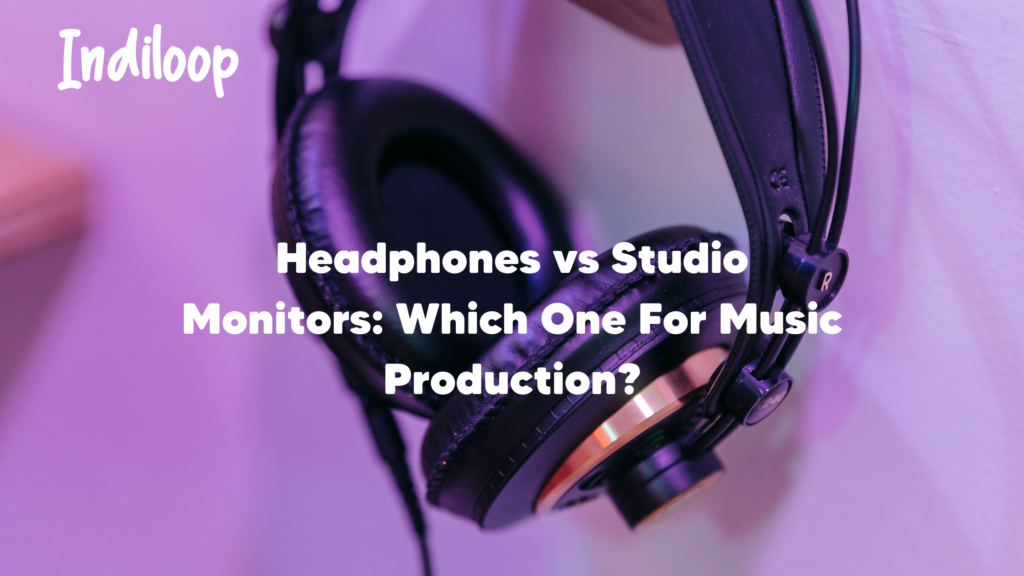
For music production, both headphones and studio monitors hold distinct advantages and cater to varied needs. Headphones provide intimacy and isolation, making them ideal for detailed sound work or environments with external noise. Studio monitors, on the other hand, offer a more accurate representation of sound in a spatial context, crucial for mixing and mastering. Factors such as room acoustics, budget, and the nature of the production task can sway a producer’s choice. Renowned music professionals frequently utilize both, depending on the stage of production, emphasizing that the selection isn’t binary but rather complementary. When diving into music production, understanding the unique strengths and limitations of each tool is important.
Advantages and Disadvantages of Using Studio Monitors for Music Production
So, what’s great about studio monitors? For one, they provide a more natural and authentic sound stage, which means you can accurately hear the details in your mix. Additionally, better crossfeed and stereo imaging can be achieved with monitor speakers, helping you perfect your panning and placement of instruments in the mix.
Using studio monitors also gives you a more consistent frequency response across different devices – which is essential when your music will be played on a variety of systems. And let’s not forget that working with monitors may cause less ear fatigue and hearing damage compared to long hours spent with headphones.
However, there are some drawbacks to consider when it comes to studio monitors. First off, they usually come with higher costs and maintenance compared to headphones. High-end speakers, especially, can be quite expensive, making them a significant investment for your music production setup.
Another challenge with studio monitors is the need for a larger space and acoustically treated environment. The low end of your mix, in particular, can be heavily affected by room size and treatment, which is essential for achieving accurate sound reproduction. This also means more noise and disturbance to others if you’re working in a shared space or a quiet environment.
Lastly, studio monitors lack the portability and convenience that headphones offer. It can be cumbersome to move around or travel with them, making it difficult for those who want to work on the go or in different locations.
Advantages and Disadvantages of Using Headphones for Music Production
When it comes to mixing music, headphones offer several benefits. First and foremost, they are often more budget-friendly than studio monitors, allowing you to invest in quality headphones without breaking the bank. Additionally, headphones are fantastic for working in smaller spaces where acoustic treatment might be a challenge. With headphones, you won’t have to worry about disturbing your neighbors or family members with loud music, making late-night sessions more viable.
Portability is another advantage of using headphones for music production. Whether you’re traveling, moving between studios, or simply need a change of environment, your headphones can easily come along with you. Furthermore, closed-back headphones can provide excellent sound isolation, while open-back headphones offer a more natural listening experience – allowing you to choose the best option for your needs.
However, using headphones for mixing does have some drawbacks. One of the main cons is that the soundstage may not be as natural and authentic as it would be on studio monitors. This may lead to a less accurate representation of your mix when played on other speaker systems. Additionally, the stereo imaging and crossfeed may be inferior when mixing with headphones, which could impact the spatial elements of your music.
Another downside is the potential for ear fatigue and hearing damage. Prolonged, high-volume use of headphones can lead to strain on your ears, and may eventually cause harm to your hearing. Open-back headphones, with their more natural sound and reduced pressure on the ears, can help alleviate this issue to some extent.
One more potential drawback is that the frequency response may vary significantly between different pairs of headphones, meaning your mix may not translate well across other listening devices. This can make it difficult to achieve a consistent mix that sounds great on various playback systems.
How to Choose the Best Option for Your Music Production Needs and Preferences
Firstly, consider your budget and available space. While headphones are generally more affordable and require less room, studio monitors may provide a better sound experience if you can accommodate them in your home studio and have the funds. On the other hand, remember that with studio monitors, you should also account for the cost of acoustic treatment to optimize your listening environment.
Noise level and comfort are essential factors to weigh when choosing between headphones and studio monitors. Headphones provide a more intimate and private listening experience, which can be great for late-night sessions or if you have neighbors who may be disturbed by noise. However, using headphones for extended periods of time might lead to discomfort, making studio monitors a more appealing choice for longer sessions.
Think about the genres and instruments you work with, as well as your personal preferences. Some individuals may prefer the separation and sonic detail of headphones, while others find a more authentic experience with studio monitors. It’s important to test different options before making a final decision, so try borrowing or renting equipment if possible.
Remember, it’s not an either-or situation. Many producers and engineers use both headphones and studio monitors in combination for reference and comparison. This versatility can help you spot issues in your mix and provide multiple perspectives on your music.
Calibration is key, regardless of whether you choose headphones or studio monitors. Regularly calibrate your ears and devices to maintain an accurate and consistent listening environment.
Lastly, don’t be afraid to experiment. Try different settings, positions, and angles with your monitors, or test various headphone models. Ultimately, your choice between headphones and studio monitors should align with your music production goals and preferences, providing an enjoyable and efficient experience.